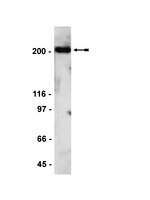A junctional problem of apical proportions: epithelial tube-size control by septate junctions in the Drosophila tracheal system.
Wu, Victoria M and Beitel, Greg J
Curr. Opin. Cell Biol., 16: 493-9 (2004)
2004
Mostrar resumen
The size of epithelial tubes is critical for the function of organs such as the lung, kidney and vascular system. However, the molecular mechanisms regulating tube size are largely unknown. Recent work in the Drosophila tracheal system reveals that septate junctions play a previously unsuspected role in tube-size control. Surprisingly, this tube-size function is distinct from the established diffusion barrier function of septate junctions, and involves regulation of cell shape rather than cell number. Possible tube-size functions of septate junctions include patterning of the apical extracellular matrix and regulation of conserved cell polarity genes such as Scribble and Discs Large. | 15363798
 |
Dlg, Scribble and Lgl in cell polarity, cell proliferation and cancer.
Humbert, Patrick, et al.
Bioessays, 25: 542-53 (2003)
2003
Mostrar resumen
Dlg (Discs large), Scrib (Scribble) and Lgl (Lethal giant larvae) are evolutionarily conserved components of a common genetic pathway that link the seemingly disparate functions of cell polarity and cell proliferation in epithelial cells. dlg, scrib and lgl have been identified as tumour suppressor genes in Drosophila, mutations of which cause similar phenotypes, involving disruption of cell polarity and neoplastic overgrowth of tissues. The molecular mechanisms by which Dlg, Scrib and Lgl proteins regulate cell proliferation are not clear, but there is some evidence that epithelial polarisation is required for this regulation. Dlg, Scrib and Lgl are highly conserved between human and Drosophila, and we discuss evidence that these proteins also play a role in cancer progression in humans. | 12766944
 |
hScrib is a functional homologue of the Drosophila tumour suppressor Scribble.
Dow, Lukas E, et al.
Oncogene, 22: 9225-30 (2003)
2003
Mostrar resumen
Scribble (scrib), discs large (dlg) and lethal giant larvae (lgl) encode proteins that regulate cell polarity and have been identified as neoplastic tumour suppressor genes in Drosophila melanogaster. Here, we have used the Drosophila model system to provide the first functional evidence that human Scribble (hScrib) can act as a tumour suppressor. We show that hScrib protein displays highly polarized localization in mammalian epithelial cells and colocalizes with mammalian Dlg, similar to D. melanogaster Scribble (DmScrib) distribution in Drosophila epithelium. Furthermore, hScrib can rescue the polarity and tumorous overgrowth defects of scrib mutant Drosophila. hScrib therefore can act as an effective tumour suppressor in vivo, regulating both apical-basal polarity and cellular proliferation in a manner similar to that of DmScrib in Drosophila. These data demonstrate that hScrib is a functional homologue of DmScrib and therefore predict an important role for hScrib in the suppression of mammalian tumorigenesis. | 14681682
 |
Human scribble (Vartul) is targeted for ubiquitin-mediated degradation by the high-risk papillomavirus E6 proteins and the E6AP ubiquitin-protein ligase.
Nakagawa, S and Huibregtse, J M
Mol. Cell. Biol., 20: 8244-53 (2000)
1999
Mostrar resumen
The high-risk human papillomavirus (HPV) E6 proteins stimulate the ubiquitination and degradation of p53, dependent on the E6AP ubiquitin-protein ligase. Other proteins have also been shown to be targeted for degradation by E6, including hDlg, the human homolog of the Drosophila melanogaster Discs large (Dlg) tumor suppressor. We show here that the human homolog of the Drosophila Scribble (Vartul) (hScrib) tumor suppressor protein is also targeted for ubiquitination by the E6-E6AP complex in vitro and that expression of E6 induces degradation of hScrib in vivo. Characterization of the E6AP-E6-hScrib complex indicated that hScrib binds directly to E6 and that the binding is mediated by the PDZ domains of hScrib and a carboxyl-terminal epitope conserved among the high-risk HPV E6 proteins. Green fluorescent protein-hScrib was localized to the periphery of MDCK cells, where it colocalized with ZO-1, a component of tight junctions. E6 expression resulted in loss of integrity of tight junctions, as measured by ZO-1 localization, and this effect was dependent on the PDZ binding epitope of E6. Thus, the high-risk HPV E6 proteins induce the degradation of the human homologs of two Drosophila PDZ domain-containing tumor suppressor proteins, hDlg and hScrib, both of which are associated with cell junction complexes. The fact that Scrib/Vart and Dlg appear to cooperate in a pathway that controls Drosophila epithelial cell growth suggests that the combined targeting of hScrib and hDlg is an important component of the biologic activity of high-risk HPV E6 proteins. | 11027293
 |











